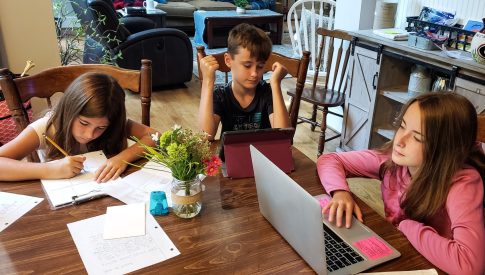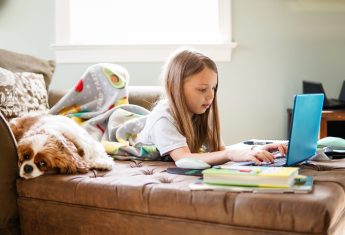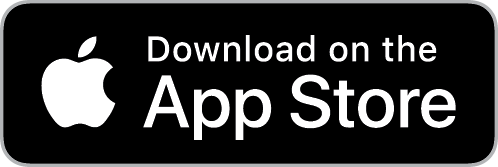Primary 6 - Second Level Numeracy
Online Numeracy Lessons for Primary 6 Students in Scotland.
Primary Six numeracy lessons begin with Place Value, teaching numbers to 100,000. Pupils can identify the value of each digit in numbers and can read and write numbers up to 100,000. They learn to compare and order numbers to 100,000 and estimate the position of a number on a number line.
We teach pupils to round to the nearest 10, 100 and 1,000 and to estimate the position of a number on a number line.
Our decimals-to-two-places lessons teaches pupils to identify decimals on a number line. They learn to use place value to identify tens, units, tenths and hundredths. They learn to round numbers to two decimal places and compare and order decimals from smallest to largest.
We teach adding and subtracting four-digit numbers. Pupils learn to add and subtract four-digit numbers with and without regrouping. They learn to use the standard written method when adding and subtracting four-digit numbers.
Pupils learn to mentally add and subtract four-digit numbers with and without regrouping.
We teach multiplying four-digit numbers by a single-digit number. Pupils learn to use the short multiplication column method when multiplying by a single digit. They learn to implement the horizontal cross multiplication method. They can create place value columns to help show multiplication visually.
We teach multiplying two-digit numbers by two-digit numbers. Pupils learn to use long multiplication when multiplying by a two-digit number and can implement the horizontal multiplication method.
Pupils learn strategies for mental division beyond times tables. They learn to use their knowledge of tables to calculate the quotient. They learn to explore inverse operations, applying multiplication facts to answer division questions. We teach to divide multiples of 10 by a single-digit number and to partition a three-digit number into 10s and units.
We teach division of four-digit numbers. Pupils learn the difference between the divisor and the dividend. They can apply the short-division written method to divide four-digit numbers. They learn the “chunking method” by repeatedly subtracting the number they are dividing with.
We teach that pupils can extend the rules of multiplying whole numbers to multiplying decimals. Pupils learn to multiply a decimal number using the short multiplication method. They learn to use the distributive law to multiply a decimal number.
We teach prime numbers. Pupils learn to define and identify factors of whole numbers. They learn to explore numbers with only two factors and can identify the prime numbers up to 100.
Pupils learn common factors and common multiples. They learn that factor refers to an exact divisor of the given number. They recognise that multiples are the product obtained after multiplying a number by an integer. They learn to apply their knowledge to identify common factors and multiples of whole numbers.
We teach square and cube numbers. Pupils learn to calculate the square of a given number and understand which is meant by the term “squared”.
They learn calculate cube numbers up to 10 and visualise cube numbers using 3D models.
We teach fractions, percentages and decimals. Pupils learn to calculate fraction, decimal and percentage equivalences and can convert fractions, percentages and decimals.
Pupils learn to find fractions of quantities using visuals such as bar models. They learn to divide the given amount by the denominator and can multiply the answer by the numerator.
We teach how to identify equivalent fractions. Pupils learn to identify equivalences using pictorial representations. They learn to explore the relationship between the numerator and denominator in parts of equivalent fractions. They learn to construct and create equivalent fractions.
We teach simplifying fractions. Pupils learn to divide the numerator and denominator by a general common factor. They learn to convert fractions to their lowest form, finding an equivalent fraction.
Pupils learn decimal and fraction notations. They learn to represent tenths using fractions and decimals. They learn to convert fractions into decimals by dividing the numerator by the denominator. They learn to convert mixed numbers into decimal fractions and to convert decimals of one and two places into fractions.
We teach how to find a percentage of a set quantity. Pupils learn to identify the percentage symbol and to represent percentages on a hundred square. They learn to convert a percentage to a simple fraction and can calculate a percentage of a given amount.
Our money lessons continue with adding and subtracting money. Pupils learn to discuss the key concepts of budgeting. They learn to manage money and compare costs, determining what they can afford. They learn to identify a range of common household expenses. They learn the difference between essential and non-essential living costs and to estimate the cost of items within a budget.
We teach reading times in one-minute intervals on analogue and digital clocks. Pupils learn to record and read 12-hour and 24-hour clock faces. They can convert 12-hour times into 24-hour times and vice versa. They can sequence times in order (earliest-latest, latest-earliest).
We teach finding durations using 24-hour clock notations. Pupils learn to calculate durations between analogue and digital clocks. They learn to find times of multiples of 5 before/after displayed times. They learn to calculate the time intervals listed on timetables. They learn to calculate durations of an event, recording their answers in hours and minutes.
We teach estimating and measuring distance (length). Pupils learn to convert millimetres, centimetres and metres in the metric system. They learn to measure/estimate length and distance and to calculate the perimeter of 2D shapes.
We teach recording weight in grams and kilograms. Pupils learn there are 1,000 grams in a kilogram and can convert grams into kilograms and vice versa. They learn to make estimations of weight and determine appropriate units of mass. They learn to order weights from heaviest to lightest.
We teach converting units of measure of volume. Pupils learn to convert millilitres to litres and vice versa. They learn to identify a tenth of a litre. We teach them to calculate the volume of irregular shapes by counting cubes. They learn to calculate the volume or 3D shapes by multiplying the height, wide and depth.
We teach naming and describing 3D shapes. Pupils learn to use mathematical language to describe the properties of 3D shapes like faces, edges and vertices. They learn to discuss where and why particular shapes are used in the real world. They learn the relationship between 3D shapes and their nets.
We teach naming angles: acute, right, obtuse, straight and reflex. They learn that the turn of an angle is measured in degrees and to identify how many angles are within a shape. They learn to classify, compare and categorise acute, right, obtuse, straight and reflex angles and to calculate the missing angle at a point in a straight line.
We teach estimating and measuring angles to the nearest 5 degrees. Pupils learn to estimate angles to the nearest 5 degrees using a compass as a support. They learn the properties of acute, right and obtuse angles and to use a protractor to measure angles accurately.
We teach trend graphs/line graphs - range, mode, mean and median. Pupils learn to interpret, analyse and compare trend/line graphs. They learn to construct a line graph to identify trends over time. They learn to calculate the range, mode, mean and median from sets of data.


"It's bright and colourful, easy to read, and extremely easy to use unlike most textbooks or online learning websites" Daisy, S3 PupilSign Up & Learn Today

